Healthy living environment from nature
Natural woodfibre softboard is a high-performance, eco-friendly timber product that plays a vital role in modern construction, design, and sustainability. Discover the benefits of fibreboard and how it supports a sustainable future through renewable resources, energy efficiency, and recyclability.
Renewable Resource
Our softboards are made from natural wood fibers, a renewable resource from sustainably managed forests, ensuring effective resource replenishment.
Environmentally Friendly
Fibreboard uses natural lignin as a binder, eliminating synthetic chemicals and reducing environmental impact.
Reducing Overall CO2
By incorporating woodfibre board solutions into their value chain, industries will reduce their products’ CO2 footprint.
Raw material preparation
Wood chips or fibres are initially processed to break them down into smaller components. This is done through mechanical and chemical methods, ensuring the fibres are of consistent size and quality.
Fibre extraction
The wood fibres are separated from the lignin and other non-fibrous components. This can involve mechanical or chemical pulping methods, depending on the desired properties of the final product.
Wet process forming
.
Natural binding
During the drying and pressing stages, the natural lignin present in the wood acts as a binding agent. This means no additional chemicals or adhesives are used, resulting in a more natural and environmentally friendly product.
Pressing and finishing
The wet fibre slurry is formed into mats or boards and then compressed under high pressure and temperature. This step consolidates the fibres into a solid, uniform sheet, which is then cut, sanded, and finished as needed.
Advantages of Fibreboard
Strength and Durability
Natural woodfibre softboards offer excellent strength and resilience. Its uniform density and smooth finish provide superior resistance to impact, wear, and deformation, making it a durable choice for various applications.
Versatility
Suitable for a range of uses, from structural components to decorative elements, natural woodfibre softboards can be easily cut, shaped, milled, perforated and finished to meet specific design requirements.
Cost-Effectiveness
Natural woodfibre softboards are typically more affordable than many solid wood products while still offering high performance and quality. Ease of use and adaptability make them a great material by value add affordability.
Natural woodfibre softboard Properties
Produced using the wet process, our products have softboard characteristics, which enhance their acoustic and thermal insulation properties. This makes it an excellent choice for applications requiring sound absorption and temperature control.
Environmental Benefits
By using the natural lignin in wood as the binding agent, natural woodfibre softboard production avoids the need for added chemicals and adhesives. The manufacturing process also minimizes waste and promotes the use of renewable resources. Additionally, Natural woodfibre softboard products are recyclable and can be repurposed, supporting a circular economy.
Explore the life cycle of our fibreboard
The life cycle of natural woodfibre softboards highlights sustainability, making it a responsible and versatile material of choice for the construction, interior solutions, and industrial packing industries on account of its renewable sourcing, eco-friendly manufacturing, recyclability, and potential energy recovery.
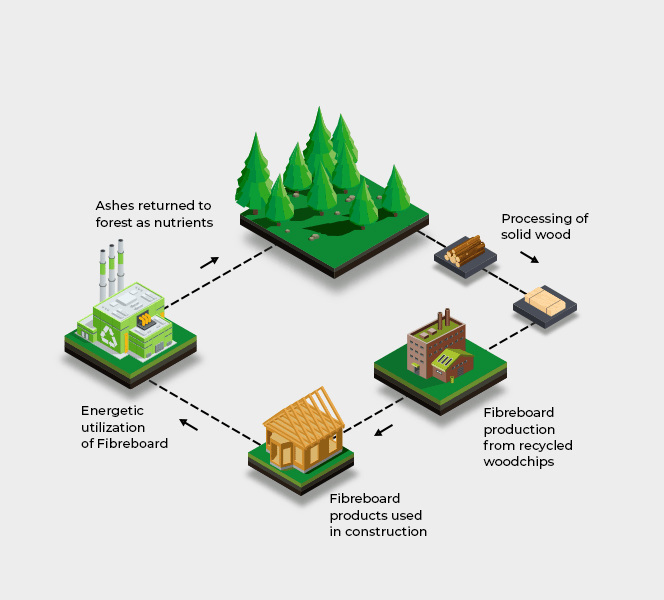
Raw Material Sourcing
Our timber is sourced from sustainably managed Nordic European forests, emphasizing renewable resources and responsible harvesting practices.
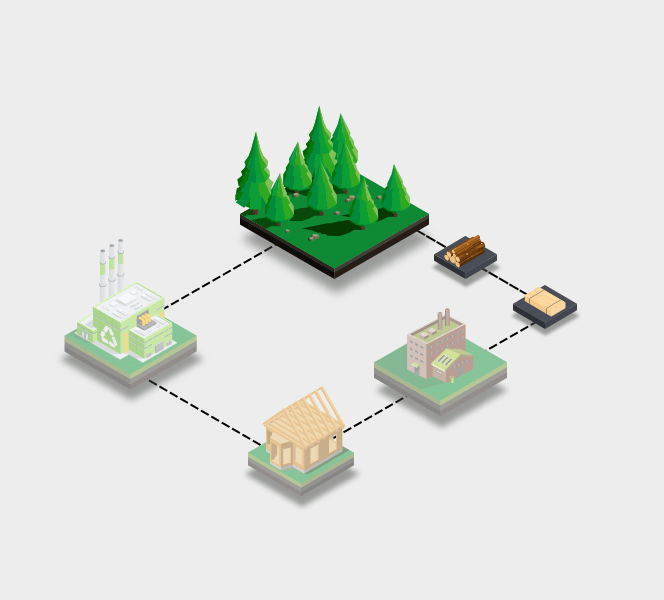
Manufacturing
Timber materials are processed using a wet method, with natural lignin as a binder, completely eliminating the need for synthetic chemicals or adhesives.
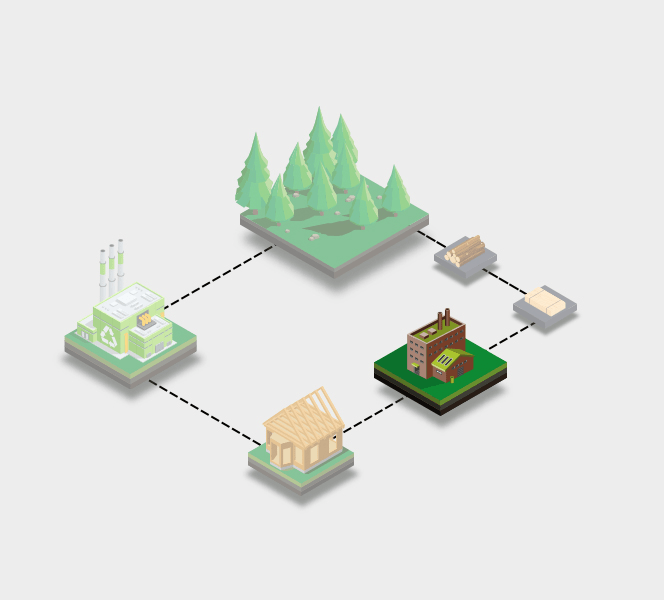
Use Phase
Natural woodfibre softboards provide durability in applications like construction and interior solutions, requiring minimal maintenance while enhancing functionality and aesthetics.
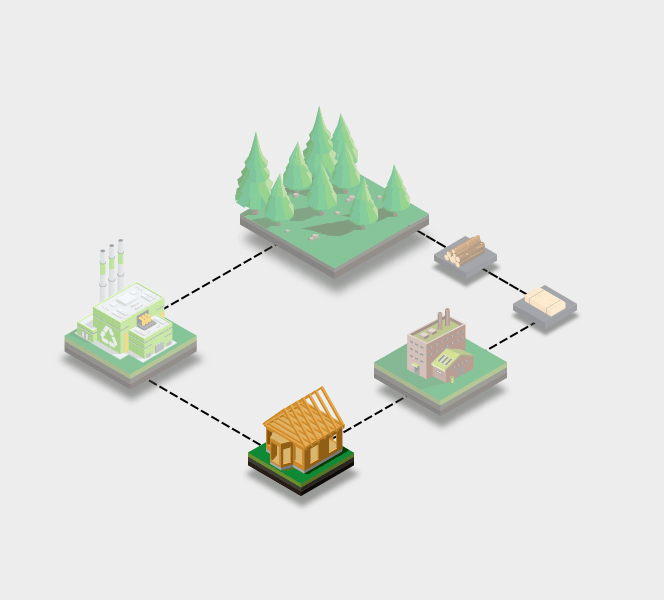
End-of-Life
Natural woodfibre softboards can be recycled or repurposed, supporting a circular economy and reducing waste.
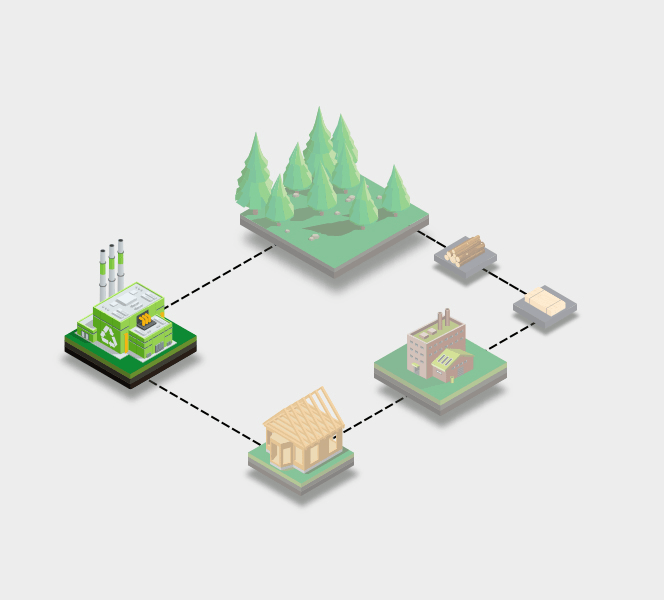
Energetical Utilisation & Disposal
If recycling isn’t possible, natural woodfibre softboards can be used for energy recovery through incineration, producing bioenergy. Alternatively, their natural wood fibres decompose naturally, lowering environmental impact.
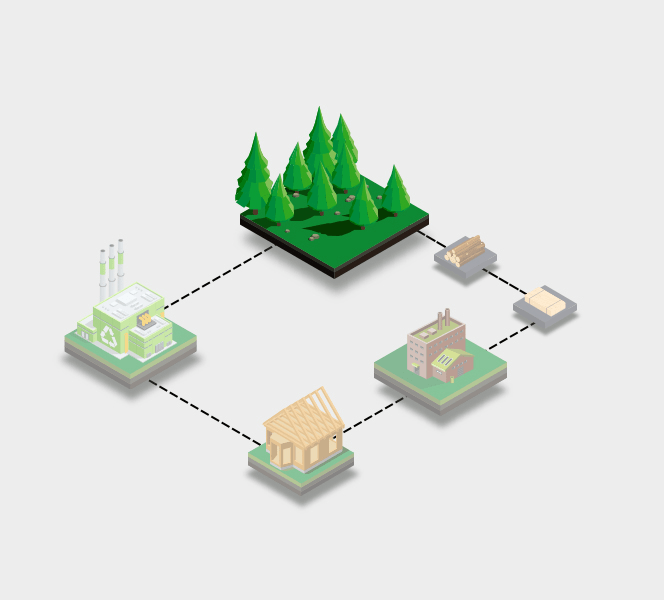
CO2 benefits
Reducing carbon footprints in the process
Natural woodfibre softboards offer a significant potential in reducing carbon footprints and contributing to CO2 sequestration. The use of renewable wood resources, energy-efficient production methods, and ability to act as a carbon sink (Embodied carbon) throughout its life cycle make Natural woodfibre softboards a sustainable material of choice for construction and other industries.
Additionally, the insulating properties of natural woodfibre softboards help lower the building energy consumption (Operational carbon), further supporting global efforts to reduce carbon emissions.
- Embodied Carbon
- Operational Carbon
contact us
Get in touch with us!
- Rääma 31, 80044 Pärnu, Estonia
- +372 445 1800
- info@nordicfibreboard.com
Nordic Fibreboard Ltd OÜ
Reg. Code: 12503545
VAT: EE101652014